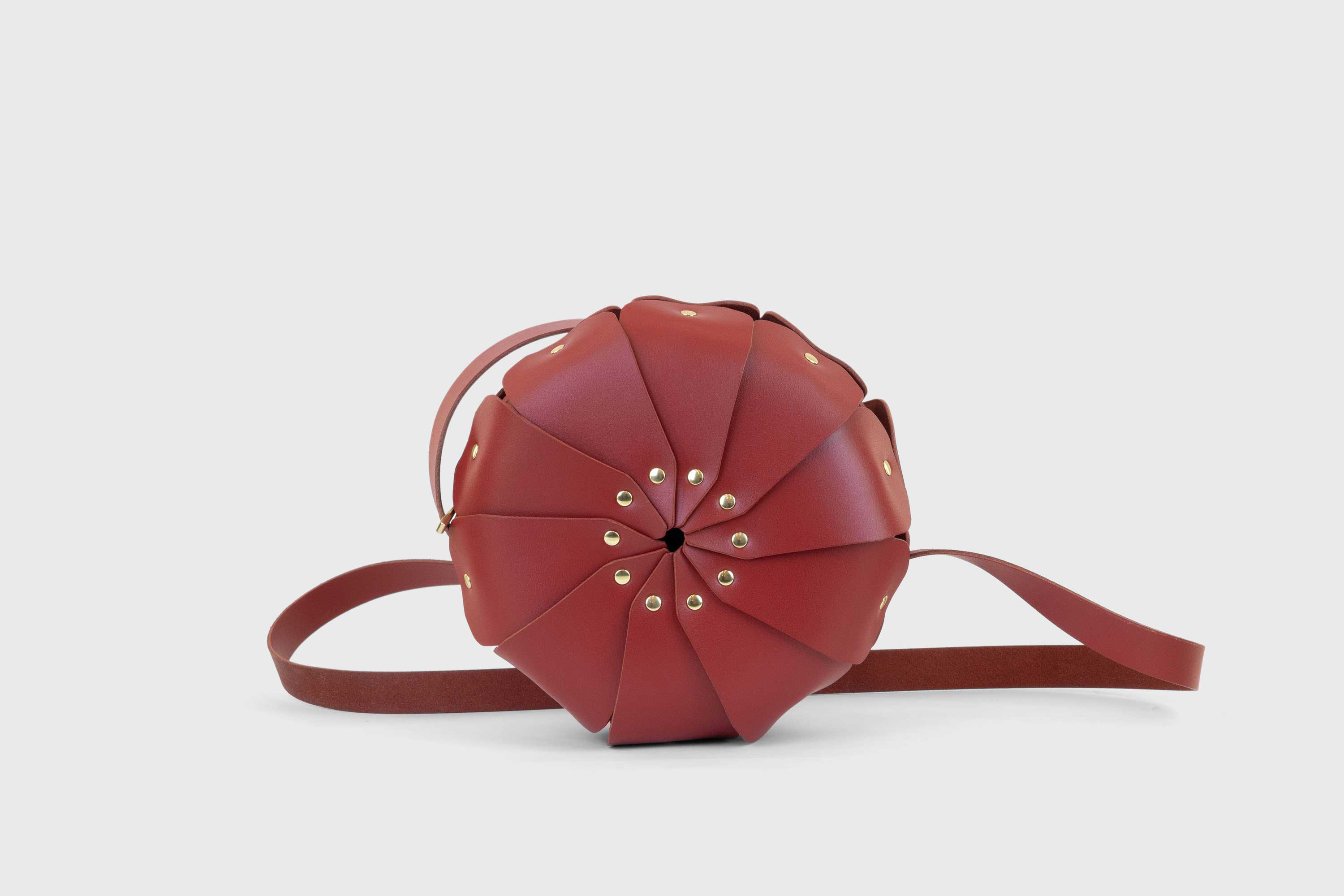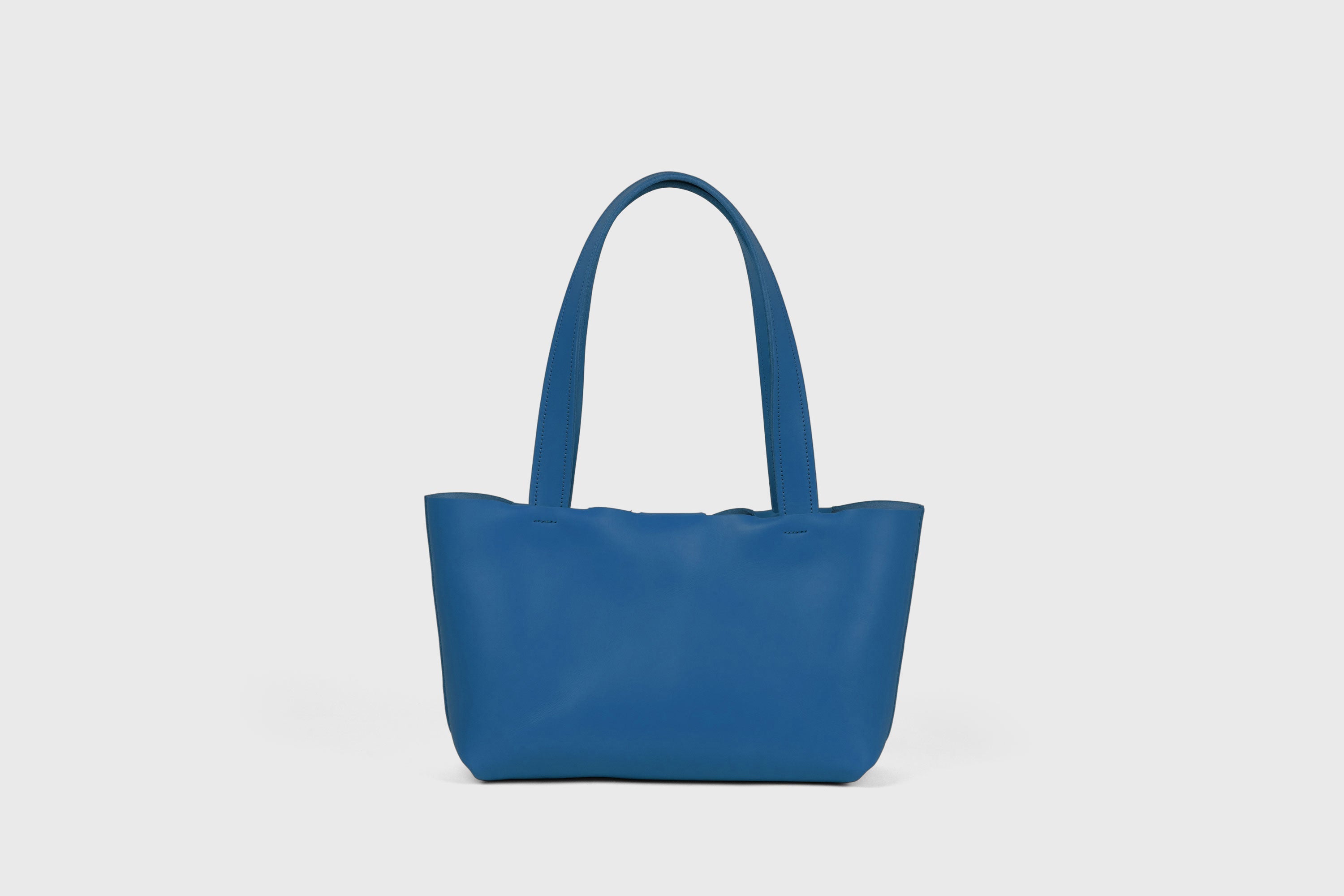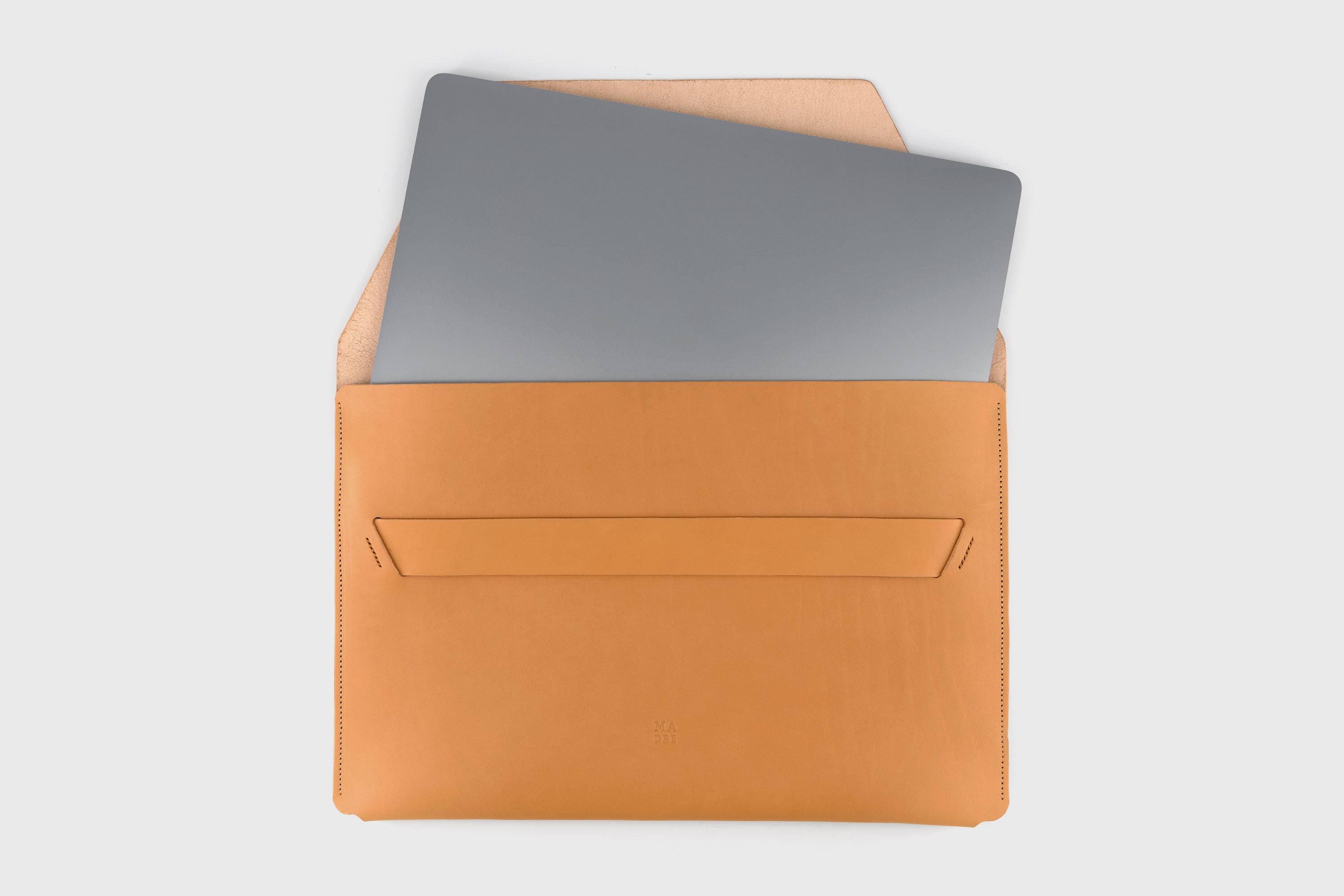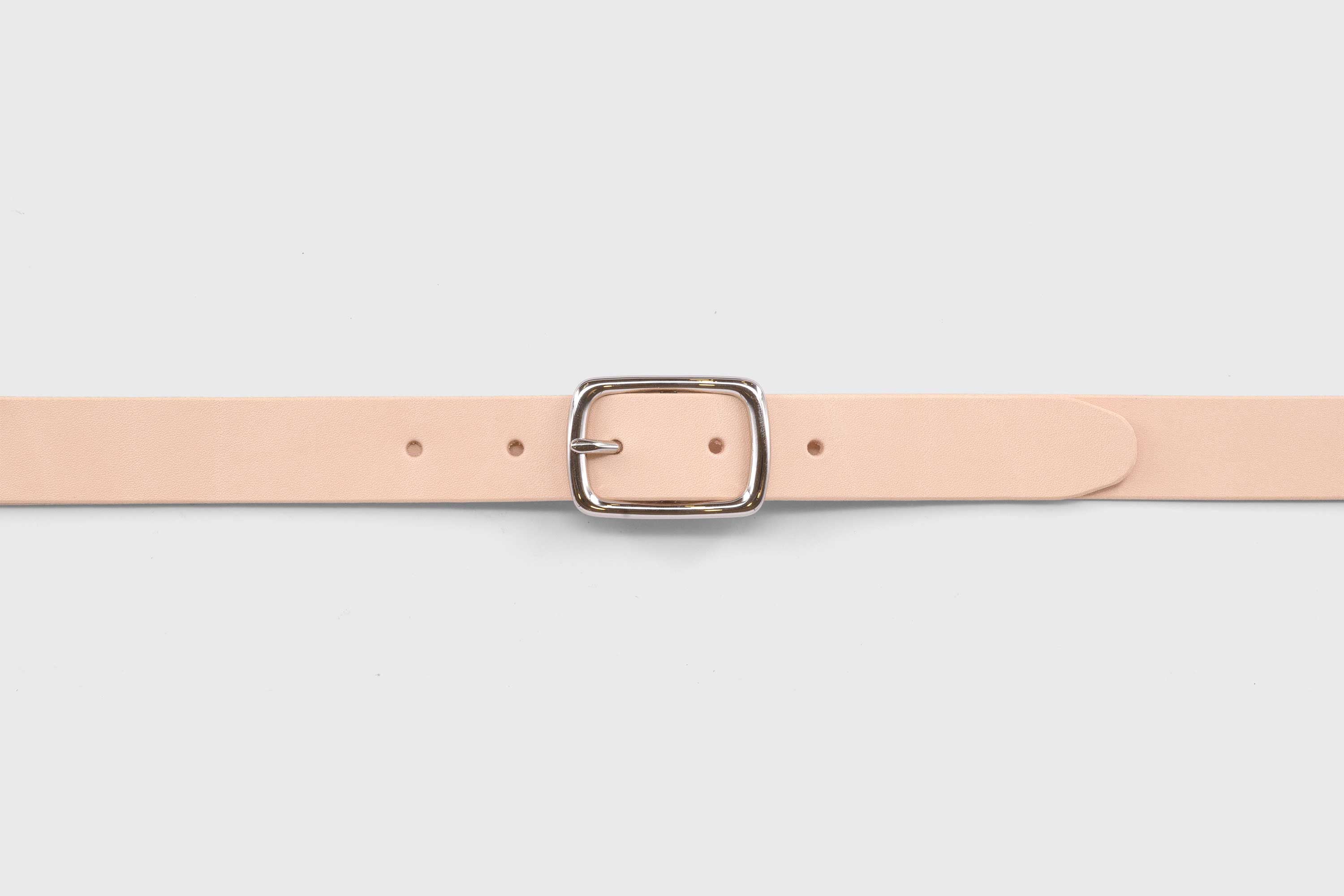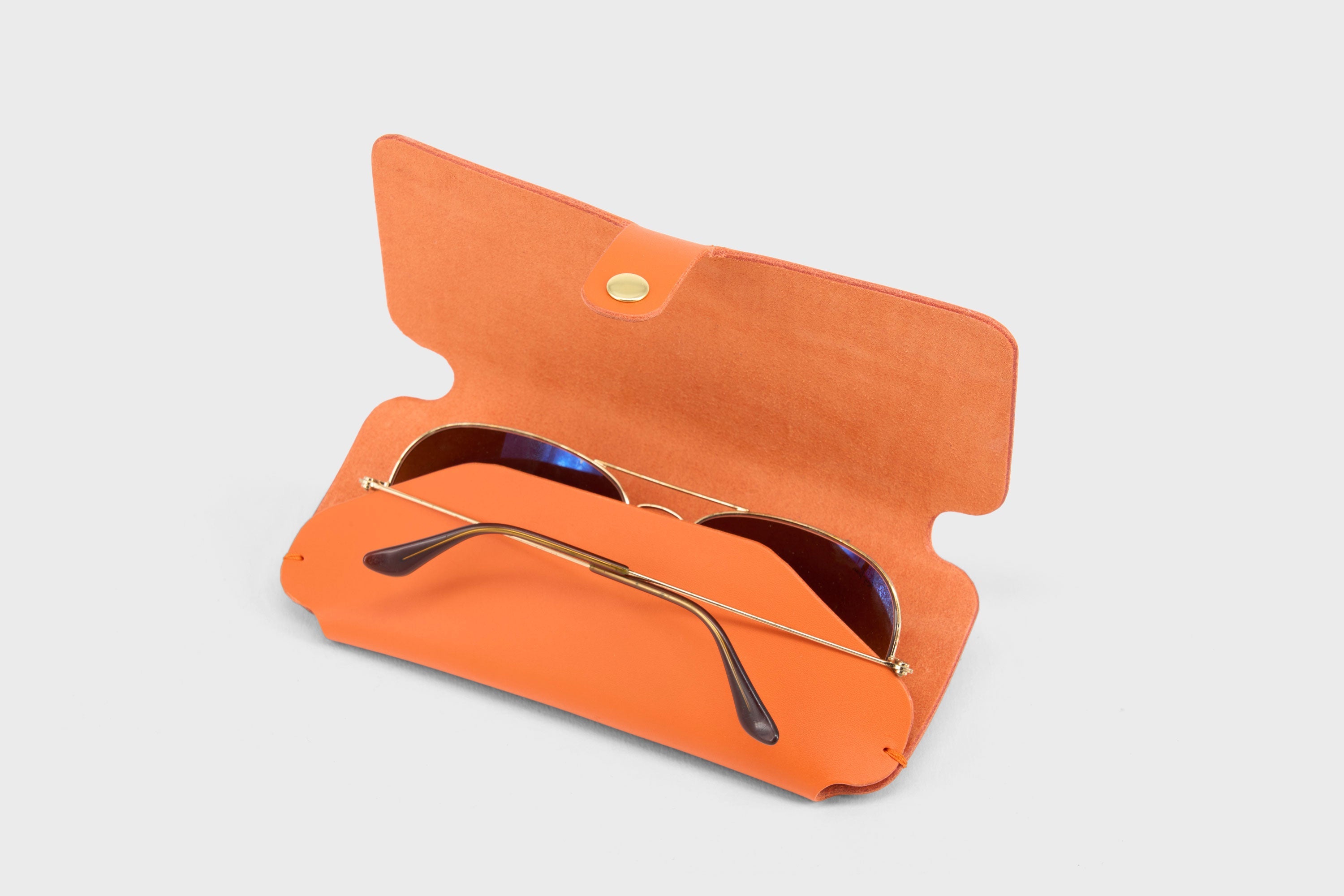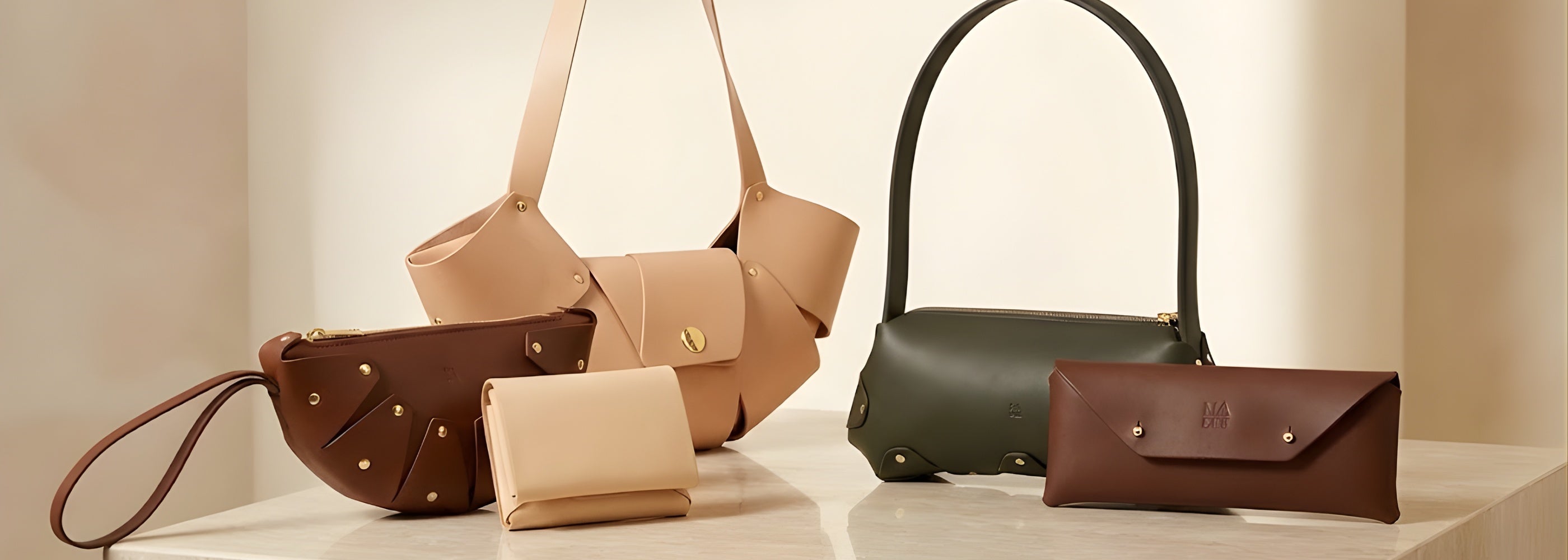Artikel: The Best Leather Wallet for Men: A Complete Guide to Choosing the Right One
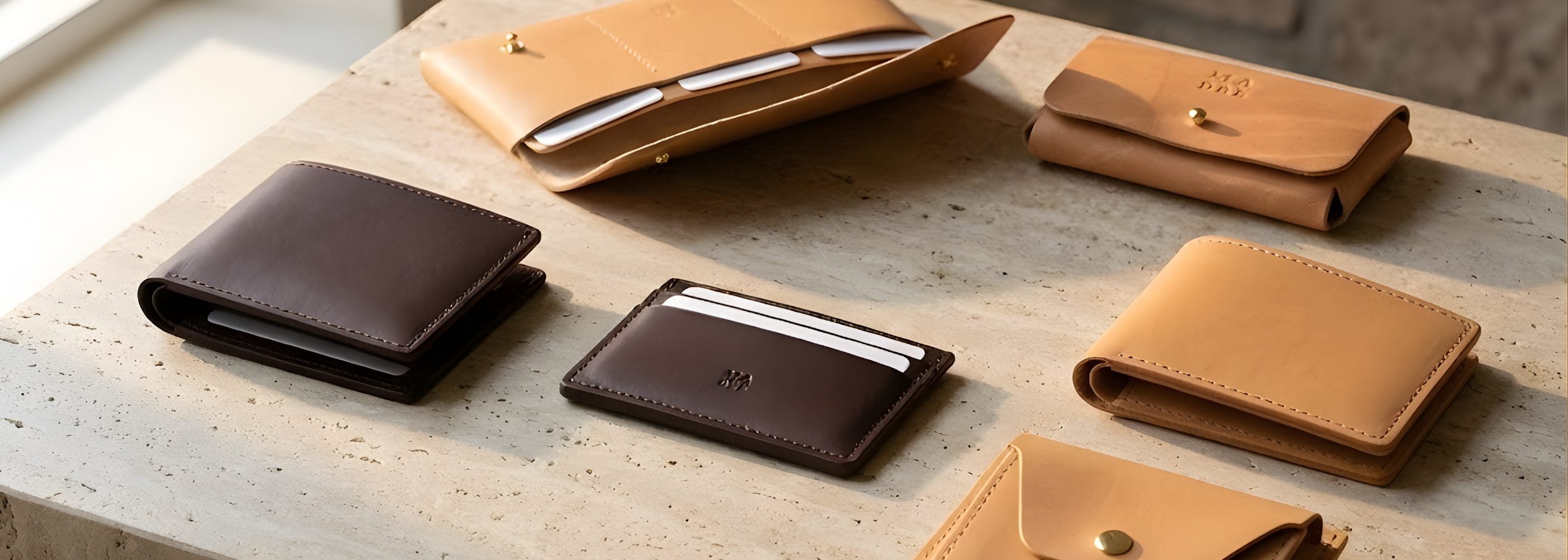
The Best Leather Wallet for Men: A Complete Guide to Choosing the Right One
At our workshop in Barcelona, we meet many customers who arrive with the same questions. How do I choose the right leather wallet? Which leather lasts the longest? Where to buy a good wallet?
This guide explains everything you should know before choosing a wallet.
Table of Contents
The Best Leather Wallets in 2026: Our Top Picks from Atelier Madre
Browse all leather wallets from Atelier Madre
1. Credit Card Wallet Minimalist Leather
This is the wallet people choose when they want the slimmest possible result, essentially a true slim leather wallet without unnecessary layers. It works well when the goal is a clean pocket profile and fast access.
Works best for: Someone who carries four to six cards, does not use cash daily and wants a wallet that disappears in a front pocket.
2. Bifold Wallet Leather
The classic bifold suits someone who carries both cards and bills and wants a familiar layout. The fold distributes pressure evenly, which helps the wallet age well if the leather is full grain.
Works best for: Someone who wants a traditional wallet with full-length compartments and stable pockets.
3. Wallet Pouch with Handle
This option is for people who prefer to carry essentials in hand or in a bag instead of inside pockets. It holds cards, cash, keys and small items without becoming bulky.
Works best for: Someone who wants a compact carry-all rather than a strict wallet, often used for travel.
4. Card Holder Leather Horizontal
The horizontal card holder offers a slightly wider layout, making card access more comfortable while keeping the profile slim.
Works best for: Someone who needs easy access to frequently used cards and prefers a simple, lightweight format.
5. Bifold Wallet with Coin Pocket
This is the most practical option for someone who still uses coins and wants everything in one place. The coin pocket adds capacity but requires strong leather to avoid bulging.
Works best for: Someone who carries coins daily and wants one wallet for all items.
Swipe left or right to see more products
What You Should Look For in a Leather Wallet
When choosing the best leather wallet for men, material quality and construction determine how the wallet will age and how reliable it will be in everyday use.
The Leather Grade Determines the Lifespan
Have you ever wondered why one wallet falls apart in months while another seems to last forever? It almost always comes down to the grade of leather used. In our workshop, we work exclusively with full grain vegetable tanned leather because it is the only grade that keeps the strongest part of the hide: the original grain layer. This top section of the hide has the densest fibers, which gives the wallet structure, resistance to stretching and long-term durability. A full grain leather wallet performs best long term because the grain layer remains intact and supports the structure from within.
Most lower-grade wallets are made from corrected or coated leather, where the surface has been sanded down and covered with a finish. At first glance they can look perfectly smooth, but this sanding removes the grain layer and weakens the fibers. This is why coated leather often creases sharply at the fold, the edges crack early, and card pockets loosen faster than expected.
Full grain leather behaves differently. The grain is untouched, so the fibers remain tightly packed. This is the reason it holds its shape, why edges burnish cleanly instead of cracking, and why the surface develops depth instead of peeling. The natural grain also allows the leather to absorb oils and light slowly, which is what creates patina.
A simple way to understand the difference is this:
In full grain leather, the strength is inside the leather itself.
In corrected or coated leather, the strength comes from the surface layer.
This is why full grain wallets age better. The structure comes from the hide, not from a painted layer that will eventually break. For a wallet used every day, the grain layer is the part that actually matters, and keeping it intact is what determines how long the wallet will last.

Craftsmanship Decides Whether the Wallet Keeps Its Shape
Even the best leather cannot perform well if the construction is weak. Craftsmanship decides whether the wallet stays flat, whether it folds comfortably and whether the edges stay bonded. This is where hand making becomes very visible in everyday use.
Stitching that supports the structure
Correct stitching is one of the clearest indicators of a well made wallet. The stitches should sit slightly inside the leather so they do not rub against the pocket or against fabric when the wallet is carried. When stitching is placed too high on the surface, friction wears it down quickly. Misaligned stitching also distributes tension unevenly and causes layers to separate. Clean, recessed stitching protects the thread and keeps the shape stable.
Edge finishing that prevents separation
The edges of a wallet carry the most stress. If the edge is simply cut and left raw, moisture and friction soften it and the layers begin to separate. A hand finished edge is sanded, burnished and sealed which bonds the layers together. This prevents splitting and helps the wallet keep its clean outline even after daily use.
Internal layers that are aligned and prepared correctly
Inside a wallet are multiple layers of leather and supporting material. If these layers are not aligned precisely, the wallet bends unevenly and pockets loosen early. Proper alignment ensures the wallet stays flat, feels balanced and retains its proportions. When each layer is skived to the right thickness, the wallet opens and closes smoothly without stressing the spine.
Balanced thickness that supports comfort and longevity
A thin wallet is convenient but only when the thickness is controlled properly. If the leather is left too thick, the spine becomes stiff and the wallet fights against opening. If it is skived too thin, the wallet collapses and stretches quickly. Balanced thickness gives the wallet flexibility while keeping the structure intact. This balance is a direct result of careful hand preparation rather than machine cutting.
Pocket design that keeps cards secure
Card pockets experience the most repeated pressure. A pocket that is cut even slightly too wide becomes loose almost immediately. A pocket that is too narrow strains at the edges and leaves marks. A precisely shaped pocket grips gently at first, molds around the card and then stays stable. When the edge is burnished properly, the opening stays firm and does not widen with use. Correct layering inside the pocket also prevents stretching and helps the entire pocket hold its structure.
How to Choose the Best Wallet for You?
Choosing the best leather wallet for men is not only about the material or the craftsmanship. It also depends on how you use a wallet, how you carry it, and what you expect it to do for you every day. A well made wallet should adapt to you, not the other way around.
There are three factors that guide the choice. The number of cards you carry, how you carry cash and how the wallet fits into your pocket. Once these are clear, the decision becomes simple.

How many cards you actually use ?
Most people carry more cards than they need, which leads them toward a thicker wallet than their routine requires. The simplest approach is to count the cards you reach for every day. If you rely on four or five, a slim wallet or card holder will feel lighter and stay flatter in your pocket. If you use several work or travel cards daily, a compact bifold distributes the thickness without becoming bulky. The number of active cards is the single strongest indicator of which wallet will feel natural for you.
How you carry cash ?
Cash changes the structure and thickness of a wallet. If you use bills regularly, you will need a dedicated cash compartment that keeps them flat. If you rarely carry cash, a minimal wallet or compact card holder will serve you better and remain slim without stretching. Coins introduce even more weight and pressure, so a zipped pocket becomes essential if coins are part of your daily routine. Matching the wallet to your cash habits prevents stretching and avoids uneven wear inside the pockets.
Where you plan to carry the wallet ?
Your pocket decides how the wallet should be built. A wallet kept in a back pocket must hold its shape and resist bending, because body weight puts continuous pressure on the spine. A wallet kept in the front pocket must stay slim and balanced so it does not push outward or feel intrusive when you move. Someone who walks or cycles daily usually prefers a thinner profile, while someone who sits for long periods benefits from a structured bifold that stays flat.
Types of Wallets and Who They Suit

Different wallet formats exist because people carry different things. Some prefer the smallest option possible, others need room for receipts or several currencies. Below are the seven wallet types we work with most often in our atelier, along with the users they naturally suit based on real habits we see in the workshop.
1. Card Holder
A card holder is the lightest option. It carries a few cards and a folded note, nothing more.
It suits someone who keeps their essentials reduced and wants a wallet that disappears in a front pocket. Customers who commute by bike or prefer a minimal carry often choose this format because it never creates bulk or pressure.
2. Slim Bifold
A slim bifold keeps the traditional shape but removes unnecessary layers, which keeps it flat.
It suits someone who carries four to eight cards and prefers the familiarity of a bifold without the thickness of older styles. This format works well for everyday use and fits comfortably in both front and back pockets.
3. Classic Bifold with Extra Capacity
This is a standard bifold with added interior pockets. It carries more cards and cash but becomes thicker as a result.
It suits someone who needs additional capacity for work cards, extra IDs or travel-related items. Many of our international customers prefer this format because it handles different currencies and more paper items without feeling disorganised.
4. Trifold Wallet

A trifold folds into three sections, holding many cards in a compact shape.
It suits someone who needs maximum organisation within one wallet and does not mind extra thickness in the pocket. It works well for people who carry loyalty cards, access cards or multiple currencies.
5. Zip Wallet

A zip wallet closes completely around the contents, keeping cards, notes and coins secured in one place.
It suits someone who wants a closed structure and prefers the assurance that nothing can slip out. Frequent travellers often choose this format because it manages coins, receipts and foreign currency without mixing them.
6. Coin Wallet
A coin wallet includes a dedicated compartment for change, which makes it practical in countries where coins are used often.
It suits someone who wants quick access to coins without relying on a separate pouch. Customers in Spain, France and other Euro countries tend to favour this option because they use €1 and €2 coins every day.
7. Long Wallet
A long wallet stores unfolded banknotes, receipts and documents in a flat, organised layout.
It suits someone who carries a bag or jacket pocket rather than storing the wallet in trousers. Many professionals choose this format for travel, work receipts or business cards that need to stay clean and uncreased.

Types of Leather Used in Wallets
Full Grain Leather
This is the strongest part of the hide because the natural grain layer is still intact. It is the only leather that keeps its fiber strength, which is why it resists stretching and holds structure for years. Full grain also ages well because nothing is covering the surface. It absorbs light and handling slowly and develops a patina instead of peeling.
How it behaves in real use
-
Card pockets stay tight because the fibers are dense.
-
The fold stays clean rather than creasing sharply.
-
The edges burnish smooth and remain stable.
This is the leather we use in our atelier because it performs best in daily use.
Top Grain Leather
This leather looks clean and uniform because the surface has been sanded. That sanding removes the strongest fibers. It still works well at the beginning, but it softens faster and pockets stretch earlier.
How it behaves in real use
-
Starts soft, but structure weakens with time.
-
Pockets loosen sooner than full grain.
-
Looks smooth but does not age with the same depth.
Genuine Leather
This is the lower part of the hide after the grain has been removed. It is often embossed with a fake pattern and coated with color. The coating hides the weakness underneath.
How it behaves in real use
-
Pockets widen quickly.
-
Surface cracks when the coating breaks.
-
Edges fray instead of burnishing.
This is why many inexpensive wallets feel good for a short time and then fail suddenly.
Bonded Leather
Not really leather in practice. It is made from leftover fibers pressed with glue and covered with a plastic layer.
How it behaves in real use
-
Flakes and peels.
-
Cannot be repaired.
-
Does not develop patina.
How to Take Care of a Leather Wallet

When you choose a good leather wallet, the way you care for it decides how it will age. Many people ask how to clean leather wallet surfaces safely, and the answer depends on avoiding heavy products and keeping daily care simple. Moisture, heat, pressure and storage all leave their marks. Once you understand how the material behaves, keeping it in good shape becomes very simple.
1. Protection During Daily Use
Moisture management
Leather absorbs water easily because its fibers remain open. When water enters, the surface darkens and the fibers swell. This reaction is normal, but the wallet must dry naturally so the fibers return to their original state. If your wallet becomes wet, pat the surface gently with a soft cloth and leave it to dry in open air. Do not speed up the process with heaters or sunlight because rapid drying pulls natural oils out of the leather and creates surface stiffness.
Cleaning the surface correctly
Daily use transfers small amounts of dust, oils and dye from pockets onto the wallet. Routine care only requires wiping it with a soft dry cloth. If deeper cleaning is needed, place a very small amount of neutral leather lotion on a cloth and wipe gently. Do not apply products directly onto the leather. Direct application can cause uneven darkening and oversoftening, which weakens the edges of card pockets over time.
Keeping the wallet within its intended capacity
Leather stretches permanently under pressure. Once a card pocket is stretched, it cannot return to its original size. If a pocket is designed for three cards, forcing in a fourth will widen it and make it loose. Overfilled wallets also bend unevenly inside pockets, which places stress on the spine and causes the structure to warp.
Protecting the wallet from rough surfaces
Smooth leather can mark easily when it rubs against keys, coins, stones, or rough fabrics. Place the wallet in a pocket or bag compartment that is free of metal objects. Small surface marks often soften with use, but deeper scratches damage the natural grain layer. Once this layer is broken, the leather loses strength because the grain contains the densest fibers.
Avoiding long exposure to sunlight
Vegetable tanned leather darkens naturally when exposed to light. A short time in sunlight creates a pleasing warm tone, but long exposure dries the surface and makes the leather harder. Do not leave the wallet on car dashboards, outdoor tables or window sills. Controlled exposure creates a patina. Prolonged exposure causes drying that is difficult to reverse.
2. Storage When Not in Use
Storing the wallet with airflow
Leather needs ventilation to stay stable. Do not store a wallet in plastic or airtight containers because moisture becomes trapped and encourages mold. Use a cotton dust bag or simply place the wallet on an open shelf. Airflow prevents humidity from softening the fibers.
Storing the wallet empty
A wallet that stays filled for long periods adapts to the shape of the contents. This creates permanent impressions and widened pockets. When you are not using the wallet for some time, remove the cards so the leather can rest and return to its natural form.
Keeping the wallet away from heat
Heat evaporates natural oils in leather. Once the oils are gone, the surface becomes dry and more vulnerable to cracking. Do not store the wallet near heaters, warm electronics or direct sunlight. A cool and dry space maintains the flexibility of the fibers.
Conditioning occasionally
Vegetable tanned leather absorbs oils slowly. Most wallets need conditioning only once or twice a year. Too much conditioner softens the structure and can leave a tacky surface that attracts dust. When conditioning is needed, apply a very small amount on a cloth and spread it evenly.
Summary
Choosing the right leather wallet becomes simple once you understand three things. The leather grade decides how the wallet will age, the craftsmanship decides whether it keeps its shape, and your daily routine decides which format will feel natural in your pocket. Full grain vegetable tanned leather gives the wallet strength from the inside, not from surface coatings. Careful hand construction keeps the edges bonded and the pockets stable. The best wallet is the one that fits the number of cards you use, the way you handle cash and the way you carry it during the day. When these parts align, a wallet does not just last longer. It settles into a shape that feels personal and becomes easier to use with time.
Frequently Asked Questions
Is full grain leather really better than other leathers?
Yes. Full grain leather keeps the strongest part of the hide. The grain layer is intact, which means the fibers remain dense and resistant to stretching. This is why full grain wallets hold their shape for years while coated or corrected leather softens and warps quickly.
How long does a good leather wallet last?
A full grain wallet that is crafted well and not overloaded can last many years. The grain tightens as it ages, so it becomes more stable. Lower-grade wallets often fail within one to three years because their surface layers break down.
Why do some leather wallets peel or crack?
Peeling usually means the wallet is made from coated leather or bonded leather. The coating breaks first because it is a synthetic layer. Cracking at the fold happens when the grain has been sanded off. Full grain leather does not peel because there is no coating to separate.
Why do card pockets stretch?
Leather stretches permanently when overloaded. If a pocket is designed for three cards and you push in more, the opening widens and cannot return to its original size. Even high quality leather will stretch if forced. Choosing the right wallet capacity prevents this.
Why does full grain leather darken over time?
Vegetable tanned leather reacts to light and oils. The color deepens slowly, creating a patina. This is normal and shows the leather is natural, not coated. Chrome tanned or synthetic leathers do not change in the same way.
Why does a new leather wallet feel stiff?
Full grain vegetable tanned leather starts firm because the fibers are tight. It softens gradually as it absorbs natural oils from your hands. This slow softening is controlled and does not weaken the structure. Quick softness usually means the leather was sanded or heavily coated.
Can a leather wallet get wet?
Light moisture is fine if the wallet is allowed to dry naturally. Heavy soaking is harmful because water replaces natural oils and stiffens the fibers. Always let it dry in the open air. Do not use heat. Heat damages leather faster than water.
Why do some wallets smell different?
Full grain vegetable tanned leather has an earthy scent from plant tannins. Chrome tanned or synthetic wallets often have a neutral or chemical smell. The scent is a strong indicator of how the leather was tanned.
Is vegan leather a good alternative for wallets?
Vegan leather is easier to manufacture but does not last as long. The surface layer is synthetic, so once it cracks or peels the wallet cannot be repaired. A full grain wallet becomes smoother and stronger with use, while vegan leather typically breaks down faster.
How often should I condition my leather wallet?
Once or twice a year is enough. Too much conditioner softens the structure and attracts dust. Use a minimal amount and always apply with a cloth, never directly on the leather.
Why does my wallet bend or collapse over time?
This usually happens when the internal layers were not aligned well during construction, or when the wallet is carried in the back pocket and overloaded. Full grain leather helps, but correct craftsmanship is the part that prevents collapse.
Can a leather wallet be repaired?
Surface marks and minor scratches can improve with use, and edges can be refinished. Deep cracks or peeling cannot be repaired because they occur when the grain is missing. Full grain wallets are the most repairable because the structure is natural, not synthetic.








